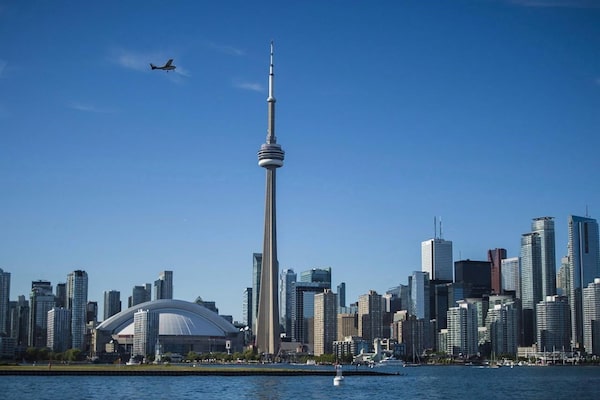
Toronto officials object to provisions in provincial proposals that would give developers the power to opt out of being compelled to provide parkland, and instead just hand over cash.The Canadian Press
Ontario municipalities, already reeling financially from COVID-19, are balking at a provincial government plan to cap the payments they receive from real estate developers for parks and other public improvements.
Toronto and Mississauga say the proposed rules will cost them millions of dollars in needed revenue and should be delayed and reconsidered while Canadian municipalities plead for billions in emergency bailouts.
Bonnie Crombie, mayor of Mississauga, calls the plan a “major windfall” for high-rise developers that would hobble her city’s ability to create needed parkland around its many planned condo towers.
“People will need to continue to physically distance themselves from others for months, maybe years, to come,” Ms. Crombie said in an interview. “It’s critical that we do build more park spaces and open spaces, particularly in high-density communities like our downtown.”
The proposed changes were first outlined last year as part of the Progressive Conservative government’s wide-ranging plan to get more housing built in the province. Detailed draft regulations were unveiled earlier this year.
The proposed regime would rewrite much of the existing process for negotiating payments between developers and municipalities, which the industry has long criticized as unpredictable and arbitrary. When he first outlined the proposals last year, Municipal Affairs and Housing Minister Steve Clark said the changes would be the end of “let’s-make-a-deal planning.”
The plan’s centrepiece is a “Community Benefits Charge,” which would replace the negotiated deals now allowed under sections of the Planning Act and meant to cover the costs of needed new parks, affordable housing and childcare centres.
Unlike the current system, this new charge would be capped at 15 per cent of the land value when building permits are issued – an idea the government and the development industry say would offer more certainty around costs.
Mr. Clark has repeatedly said that “growth should pay for growth,” and promised last year that municipalities would see “similar” revenues under his proposed changes.
But in a letter submitted to provincial officials, Toronto’s chief financial officer, Heather Taylor, says an analysis by her city’s staff shows that applying the new regime to just 27 current development projects in Toronto would cost the city $60-million in revenue and amount to a discount for developers of up to 30 per cent in most cases.
“The Minister had said in his communications to us earlier in the year that he wants to maintain municipal revenue," Gregg Lintern, Toronto’s chief planner, said in an interview. "And our analysis says that it is not going to do that.”
In an e-mailed statement, Julie O’Driscoll, a spokeswoman for Mr. Clark, said the government was consulting broadly before finalizing its plan: “We will put forward a plan that supports growth paying for growth and ensures municipalities have the tools to build complete communities.”
Toronto officials also object to provisions in the proposals that would give developers the power to opt out of being compelled to provide parkland, and instead just hand over cash. This, they warn, would mean fewer parks, as the city often cannot afford to outbid private developers when purchasing land.
Mississauga says the new regime would leave it short at least $10-million a year, while cutting the amount of parkland it could afford to put around future condo towers by 60 per cent. The city says the proposed system would also force it to jack up the charges it applies to both industrial and low-rise developers. A better system, according to Mississauga, would raise the cap to 30 per cent of land value for high-rise projects, with lower caps for other kinds of development.
Under the province’s proposal, developers would still have to pay municipalities what are known as development charges, meant to cover the costs of “hard” infrastructure such as new roads and sewers. Ontario is also considering allowing development charges to cover the costs of libraries, parks (excluding land acquisition) and recreation facilities, something municipalities welcome.
While broadly supportive, the development industry has suggested its own changes. Joe Vaccaro, chief executive officer of the Ontario Home Builders’ Association, says the cap should be 10 per cent of land value, with values pegged earlier in the process to provide more certainty – although he acknowledges they would likely be lower.
He also said municipalities should have to show that the money they collect is actually needed to provide services. For example, he said Greater Toronto municipalities have increased the amount collected for parks in recent years but have allowed more than $1-billion to sit idle in bank accounts. (Toronto officials say their unspent parks funds are earmarked for future projects.)
Our Morning Update and Evening Update newsletters are written by Globe editors, giving you a concise summary of the day’s most important headlines. Sign up today.
 Jeff Gray
Jeff Gray